Do Peppers Continue to Ripen After Picking
Peppers come in all sorts of shapes and sizes. It may be difficult to determine exactly when they're ready to be plucked. How can you tell when peppers are ripe and ready to pick? Here, we'll discuss everything we know about harvesting peppers so you can harvest with confidence!
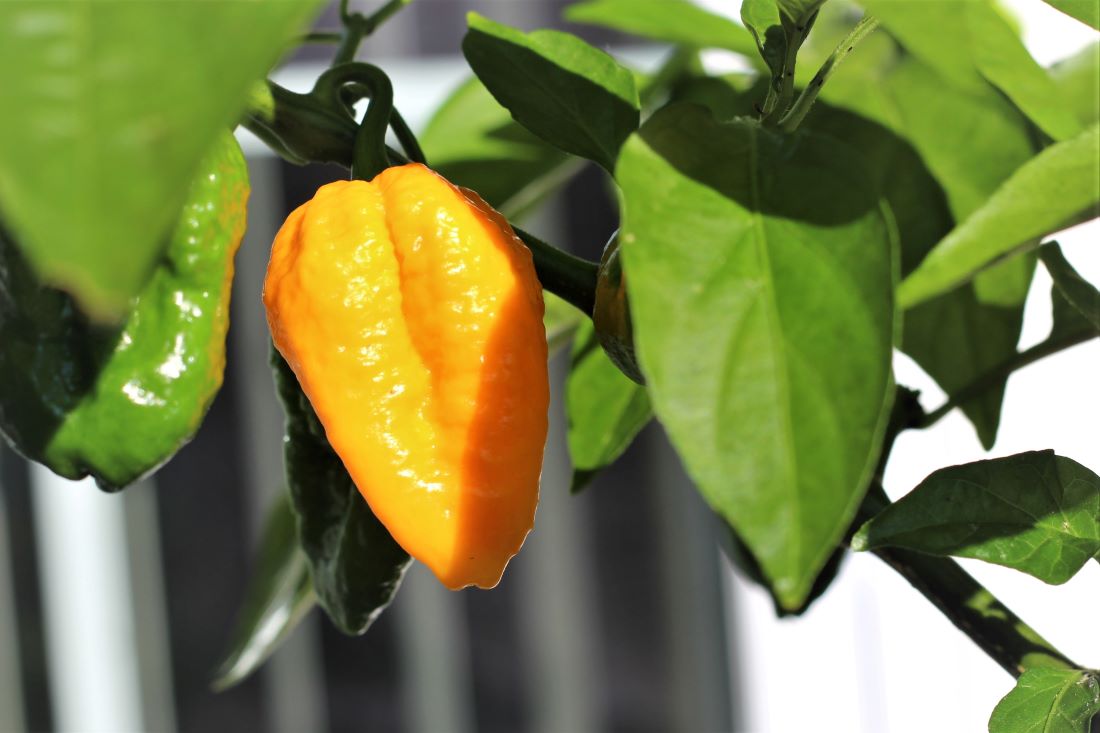
In This Article:
- How to know when peppers are ripe
- When to pick peppers (by variety)
- Bell peppers
- Jalapenos
- Habaneros
- Cayenne
- How to harvest peppers
Video:
When Are Peppers Ripe?
Pepper varieties ripen at different rates. Hot and spicy peppers are typically slower to ripen, while sweet peppers are quicker. If you have a seed packet, check the back of the packaging to get an idea of maturation time.
Peppers Change Color
The best way to tell when peppers are ready to pick is to observe changes in color. Almost all pepper varieties will go through a color change during the ripening process. For example, bell peppers change from green to a deep red when fully ripened. When you buy red bell peppers, they are simply ripened green peppers!
It can be tempting to pick your peppers before they change color, and this is okay to do. Peppers are edible at any stage of growth, but the flavor will be different. Peppers picked early will usually have less sweetness and more bitterness.
We prefer to allow our peppers to reach full maturity before harvesting. If you just can't wait, it is okay to pick a few, but leave some so that you can decide which you prefer. As a bonus, spicy varieties usually become hotter as they remain on the plant.
Time Since Planting
Under ideal conditions, most pepper varieties can begin producing ripe & ready peppers after 90-150+ days. If you are growing any of the superhot varieties, like the ghost pepper or any habaneros, they will take longer. Bell peppers and jalapenos are typically ready for harvesting on the lower end of that scale.
If you started your seeds indoors, your plants will produce more peppers, but may also take slightly longer to mature. This is because the first few months are dedicated to leafy growth. Only after the plants mature in size will they begin to set fruit.
If you see fruits that appear to be ready, consider when they were planted. If it seems too early to harvest, it probably is. Don't rush your peppers, they will ripen in their own time!
Timing is especially important to keep in mind as the growing season draws to a close. You don't want to let your pepper plants stay overnight if there is a potential frost. Be sure to harvest any final peppers before this occurs (usually around October in the Northeast US – check your area).
Pepper Corking
Corking is a natural marking that can appear on many pepper varieties. It occurs when a pepper's skin grows slower than the flesh, causing tiny tears in the skin. The white lines appear when the skin heals over the wounds.
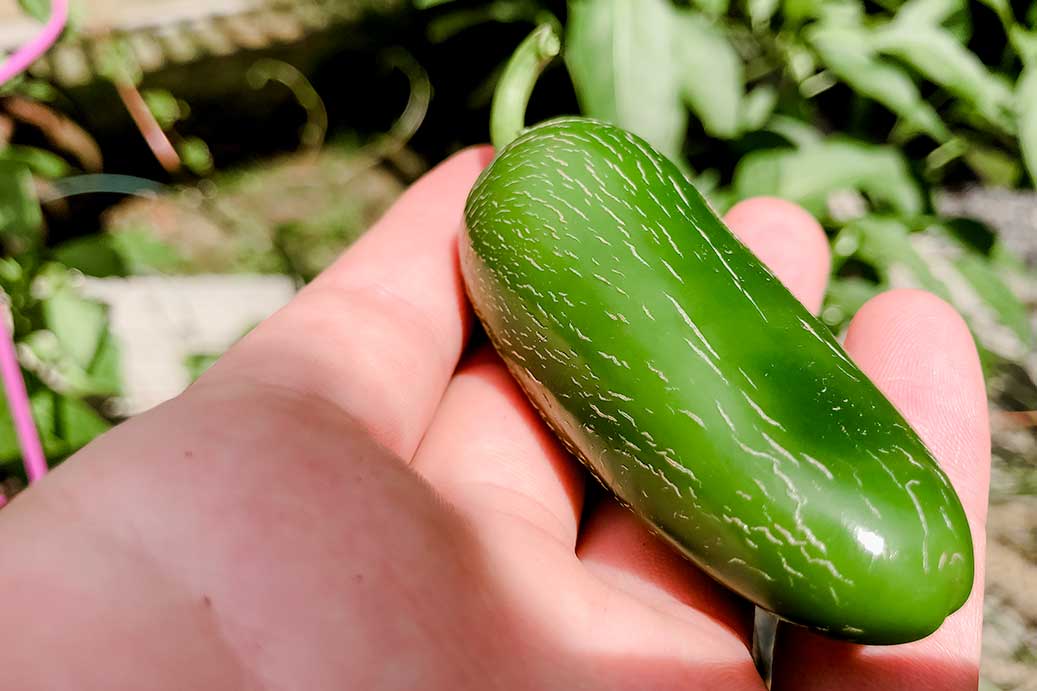
Corking is usually a desirable characteristic to pepper geeks. It signifies that there has been healthy growth, and is a sign of a ripening pepper. If your peppers have corking, it is likely that they are coming close to ripeness.
When To Pick Peppers (Harvesting By Variety)
To make harvesting peppers easier, we have put together some examples of the most common peppers. If you are growing a different variety, just follow the basic principles of harvesting peppers:
- Changing color
- Growth stops
- Softening flesh
- Easily picked from stem
- Corking (on some varieties)
Following these guidelines will help you feel confident when picking any pepper variety.
Note: If you plan to save your pepper seeds, you definitely want to wait for the peppers to fully mature and change color. Another benefit of allowing your pods to ripen, the seeds become viable for next year!
Here are some more details on when to harvest for the most popular pepper varieties.
When To Pick Bell Peppers
Bell peppers are one of the most commonly grown pepper varieties, and often the most difficult to know when to harvest. This is because many people prefer to eat bell peppers when they are green (before changing colors).
The fact is, green bell peppers are not fully ripened. You are welcome to pick them early, but waiting a few more weeks will result in delicious sweet red bell peppers. There are also other color varieties (orange, yellow, purple).
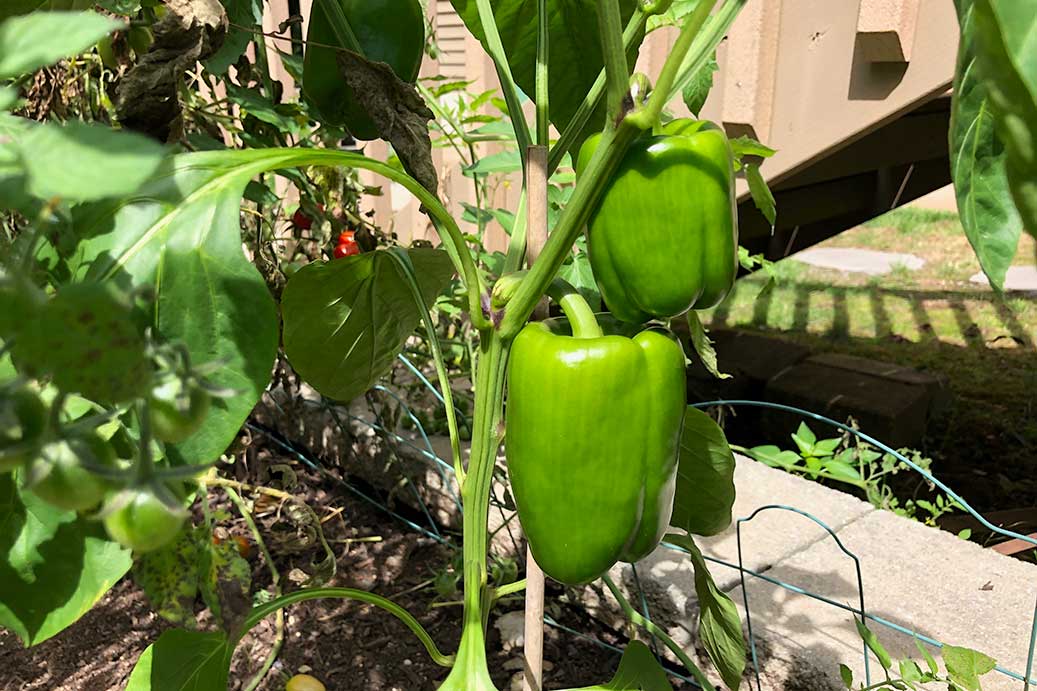
The bottom line : Pick bell peppers when they stop growing larger, or ideally, wait for them to turn red! We prefer the vibrant color and sweet flavor of a red bell pepper. They are also full of vitamin A (beta carotene)!
When To Pick Jalapenos
Jalapenos are some of our favorite peppers to grow. We grow them every year, and plan to for the rest of our days, so we have lots of experience harvesting jalapenos!
Though many do not know this, jalapenos change color when fully ripe. Most supermarket jalapenos are green, while home growers can wait a few weeks and get bright red jalapenos!
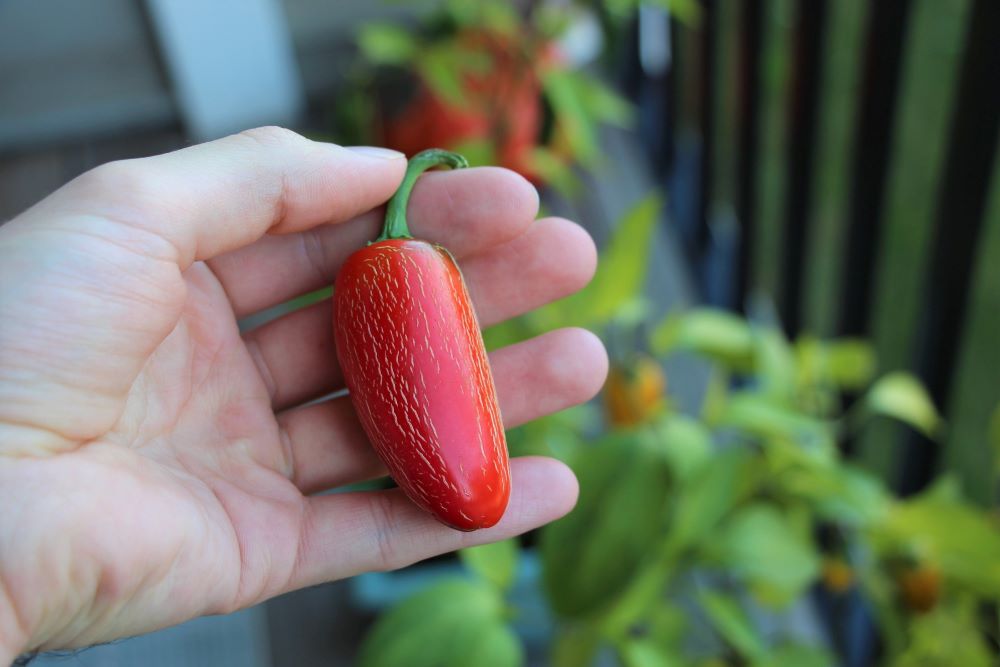
Red ripe jalapenos are more spicy, sweeter and tastier. Once the peppers begin ripening, they change from green, to black and finally to brilliant red. The peppers also become slightly softer and much sweeter in the process. Great for a colorful take on jalapeno poppers!
The bottom line: Wait for your jalapenos to reach a mature size and stop growing. They can be picked when green, but fully ripened jalapenos turn a deep red. Red jalapenos also offer a sweeter, spicier flavor (which we prefer!).
When To Pick Habaneros
Harvesting habaneros is easy. The common habanero pepper will turn bright orange when ripe. Then, and only then, should you harvest your habaneros. The flavor and aroma improves dramatically in fully ripe, orange habaneros.
Habaneros are one of the more subtle pepper varieties when it comes to color change. Habaneros start off green, turning to pale or bright orange when ready to pick. They can be picked while green, but they will lack some flavor and heat.
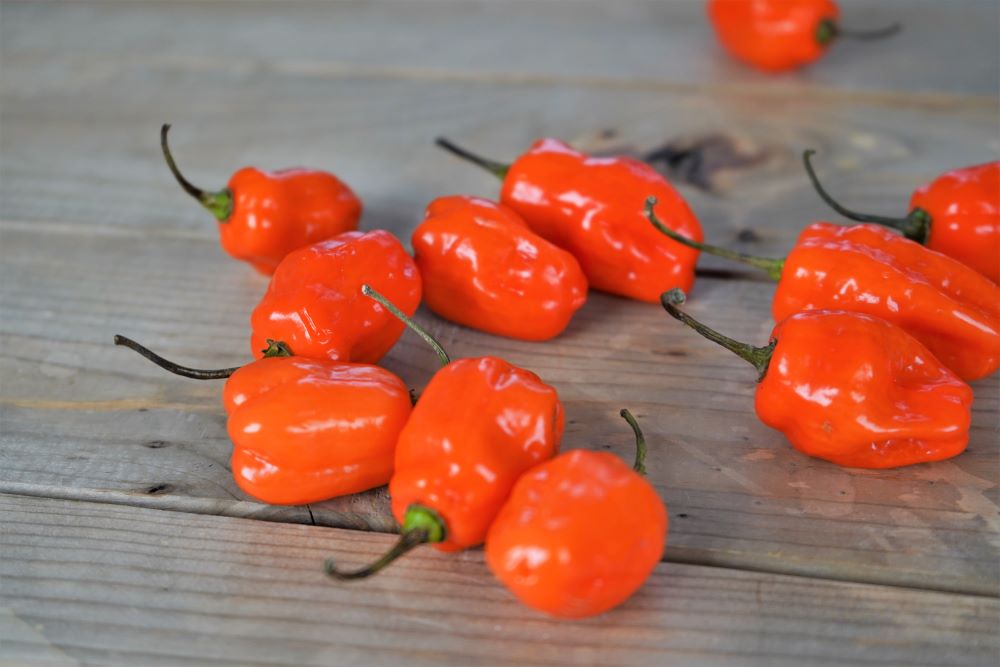
The floral smell of a fully ripened habanero cannot be beat. Some habanero varieties change to other colors, such as red, mustard orange, deep brown or even light purple! If you want to learn more about habaneros (some of our favorite spicy peppers) read here.
Avoid picking habaneros too early. Some varieties can be prone to sun scald, which can be mistaken for a ripening pepper pod. If it seems too early to be ripe, leave the peppers alone.

The bottom line : Wait for habaneros to turn bright orange. They take a long time to fully mature, so be patient! Only harvest early if there is a threat of frost in the early fall. After harvesting, be sure to check out our article on what to do with habanero peppers.
When To Pick Cayenne Peppers
Cayenne peppers are widely used in spicy dishes. From cayenne pepper powder to Frank's RedHot sauce, cayenne has made a name for itself. There are many varieties of cayenne pepper, but most have the same characteristics: Long, skinny, red and spicy.
The most common cayenne peppers will ripen to a bright, vibrant red color. This is the best indicator that it is time to pick cayenne peppers. They may also show some corking marks, but usually not. They can be picked before turning red, but again, they will lack sweetness and heat.
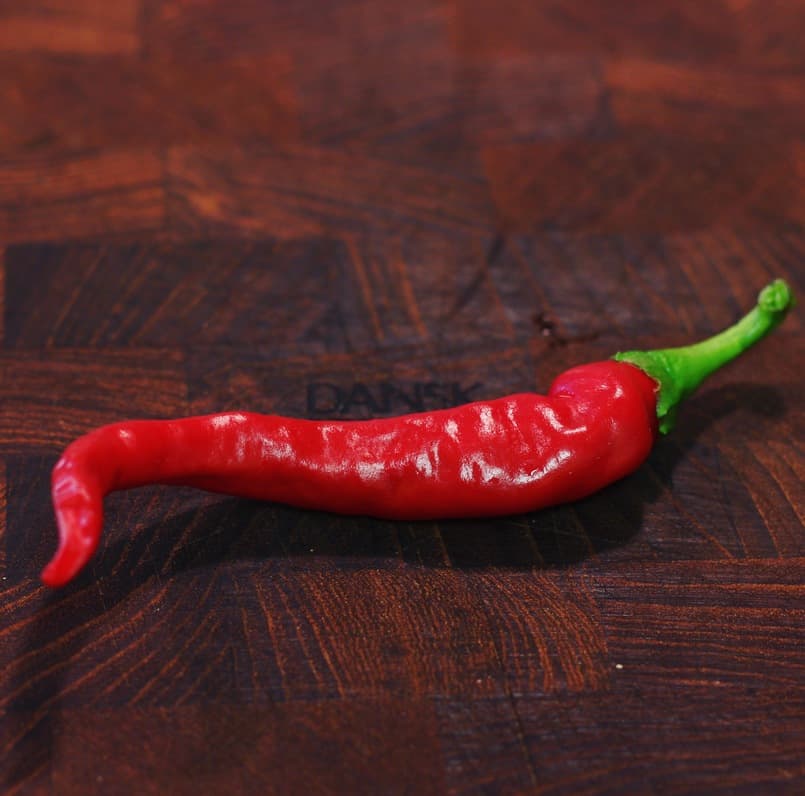
If you're growing cayenne peppers, you'll often find that some peppers ripen before others. Be sure to pick any ripe peppers when they are ready. This ensures that your plants focus energy on ripening the other peppers.
The bottom line : Wait for the cayenne peppers to fully turn red, and then harvest immediately! They will continue to ripen but will often fall off the plant if left unpicked.
How To Pick Peppers
When it comes to pepper harvesting technique, you have a couple options. Many varieties will happily come loose when they are ripe, but others may require some extra effort.
For example, we harvest jalapeno peppers by hand, pulling each pepper in and upwards motion. The peppers usually 'pop' off of the plant with ease when they are properly ripe.

Bell peppers can be a bit more stubborn when harvested. Due to the large stem on each bell pepper, we prefer using a sharp pair of scissors to slice the pepper from the plant. Make sure you get a clean cut to avoid damaging the plant. The piece left on the plant will usually die and fall off a few weeks later.
Habanero peppers are easily picked by hand. Use one hand to hold the plant's stem in place, and gently pull the pepper's stem up and away from the plant.
Cayenne peppers can be harvested by hand, as they are easy to pick when ripe. These peppers are known to fall off of the plant fairly quickly after ripening, so be sure to keep watch!
Overall, when harvesting peppers, your goal is to remove the pepper and cause as little harm to the plant possible. Use scissors or pruning shears if you prefer, or go old fashioned and just use your hand. In any case, if the peppers are ripe and ready, harvesting will be much easier!
I hope this article helps you feel comfortable harvesting peppers at home. This is the most exciting time of year, so enjoy it! If you have questions, please feel free to leave them below.
Read Next:
- Pickling peppers
- Dehydrating peppers
- Freezing peppers
- When to pick banana peppers
Source: https://peppergeek.com/harvesting-peppers/

0 Response to "Do Peppers Continue to Ripen After Picking"
Post a Comment